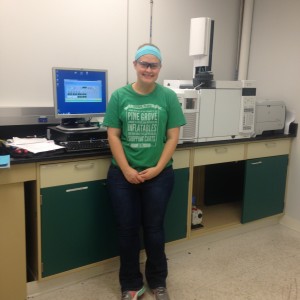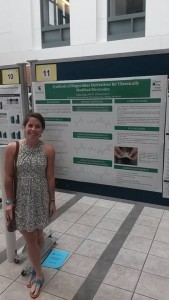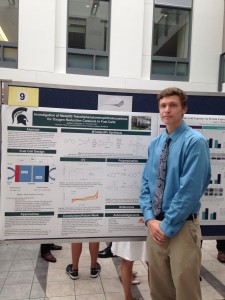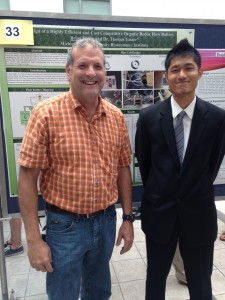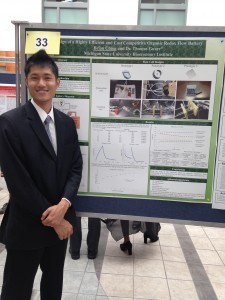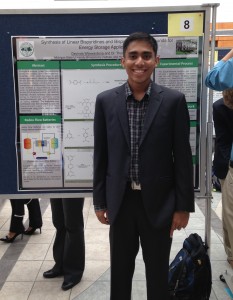Jessica was kept busy synthesizing this summer….
Development of Heterocyclic Catholyte Molecules for Application in Redox Flow Batteries; Jessica D. Scott and Thomas F. Guarr
Accompanying the increased discussion over climate change and global warming in the news, there is a widespread desire to research and design stable and cost-effective methods to store renewable energy on a large scale. One possible answer to the energy crisis may be found in the use of redox flow batteries. Redox flow batteries have the ability to convey chemical energy, generated from electrochemically reversible reactions, into electrical energy which could then be stored for later use. Research suggests that heterocyclic derivatives can be paired with extended viologen systems to produce very desirable electrochemical properties.
Jessie graduated from Hope College this spring with an ACS Certification Chemistry degree, spent her summer with us, and is continuing on to work in the Chicago area. Best wishes for your future, Jessie!
